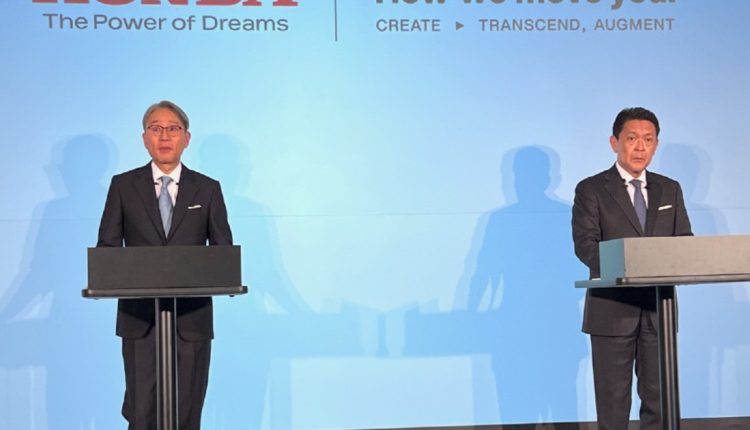TOKYO – Honda CEO Toshihiro Mibe admits falling behind in the global race for electric vehicles. Now he is outlining a sweeping strategy to “fight back” and rekindle Honda’s mojo.
Honda’s radical revamp hinges on new models, better batteries, powerful software and a transformed driver interface, along with dedicated EV factories and an overhauled production system being developed by one of the world’s most innovative manufacturers.
It also involves a newly secured supply of semiconductors, the lifeblood of tomorrow’s cars.
Mibe pledged the worldwide reboot will shift into high gear starting in 2025.
The CEO outlined the vision Wednesday while giving Honda’s annual business briefing. Mibe said Honda executives had an unpleasant surprise at this month’s Shanghai auto show.
Chinese brands flooded the exhibition hall with sophisticated, advanced EVs.
As COO Shinji Aoyama put it, “We were overwhelmed by the Chinese.”
Mibe said Chinese automakers had made big strides during the COVID-19 pandemic when the world was largely cut off from the country by travel restrictions and quarantine measures.
“They are ahead of us, even more than expected,” Mibe said.
“We are thinking of ways to fight back. If not, we will lose this competition,” he said. “We recognized we are slightly lagging behind, and we are determined to turn the tables.”
The doubled-down ambition is part of Honda’s bigger plan to ditch internal combustion by 2040 and sell nothing but full-electric and hydrogen fuel cell vehicles by then.
Along the way, it plans to have production capacity to sell some 2 million EVs and fuel cells globally in 2030.
In the meantime, Honda will milk its gasoline and hybrid vehicles for all the profits it can and channel the funds back into developing EVs and other technologies of tomorrow.
“We will strive to generate a business structure that generates earnings even in the EV era,” Mibe said. The goal is a 7 percent return on sales in the near term and more starting in 2030.
“We believe it is important to aggressively reinvest free cash flow from our internal combustion business, including hybrids, into areas linked to our competitiveness in future electrification.”
2025 turning point
Honda’s fight back kicks into high gear in 2025 when Honda launches its in-house dedicated EV platform in North America for midsize to large EVs. In China, Honda unveiled four EV models at the Shanghai show and said it would phase out gasoline cars by 2027 on its way to offering only EVs there by 2035.
Furthermore, Honda EVs starting with the 2026 model year will also be equipped with a new automotive operating software that Honda is developing internally.
The software will enable a new user interface for drivers and passengers.
In fact, Honda appointed its first “global UX officer” from April 1 to make the interiors of Honda cars more like smartphones. The new hire is Yokichi Koga, CEO of Drivemode, a Silicon Valley-based software startup that Honda bought in 2019 as part of its plunge into digital mobility.
The goal is offering new software services and applications that can rake in revenue.
“The business model itself is totally different from what we have right now,” Mibe said.
In the past, automakers mainly made money off the one-time sale of the hardware; volume was king. Going forward, Honda will keep selling services over the entire lifetime of the vehicle. Volume alone will not guarantee success; additional services must be provided over the long run.
“We have to think about longtime value and developing that into our business,” Aoyama said.
To power all that software, Honda has also entered a partnership with Taiwan Semiconductor Manufacturing Co., the world’s largest microchip maker.
That will help guarantee a steady supply of chips in the mid- to long term, helping to avoid shortages like the one that crimped car output across the industry over the last couple of years, Mibe said.


